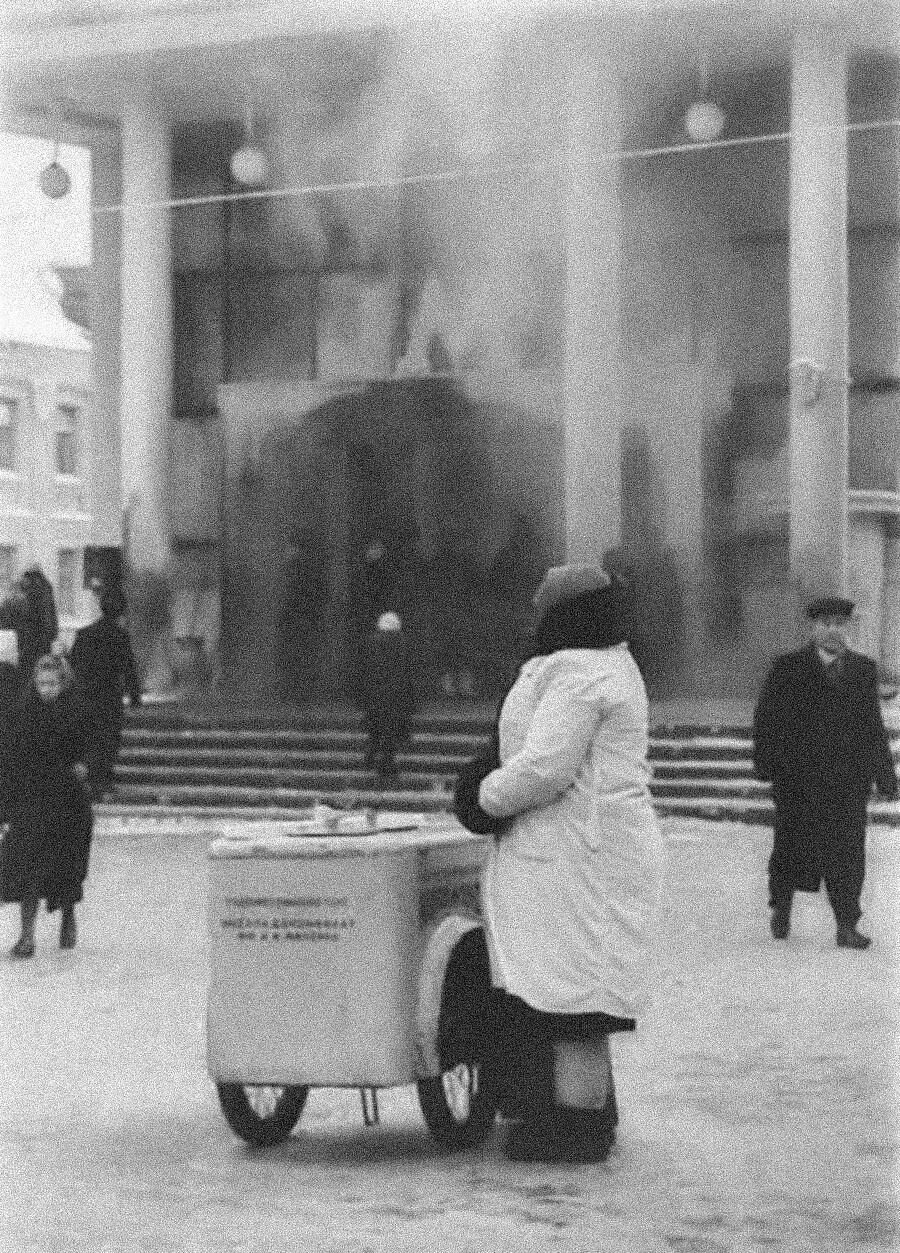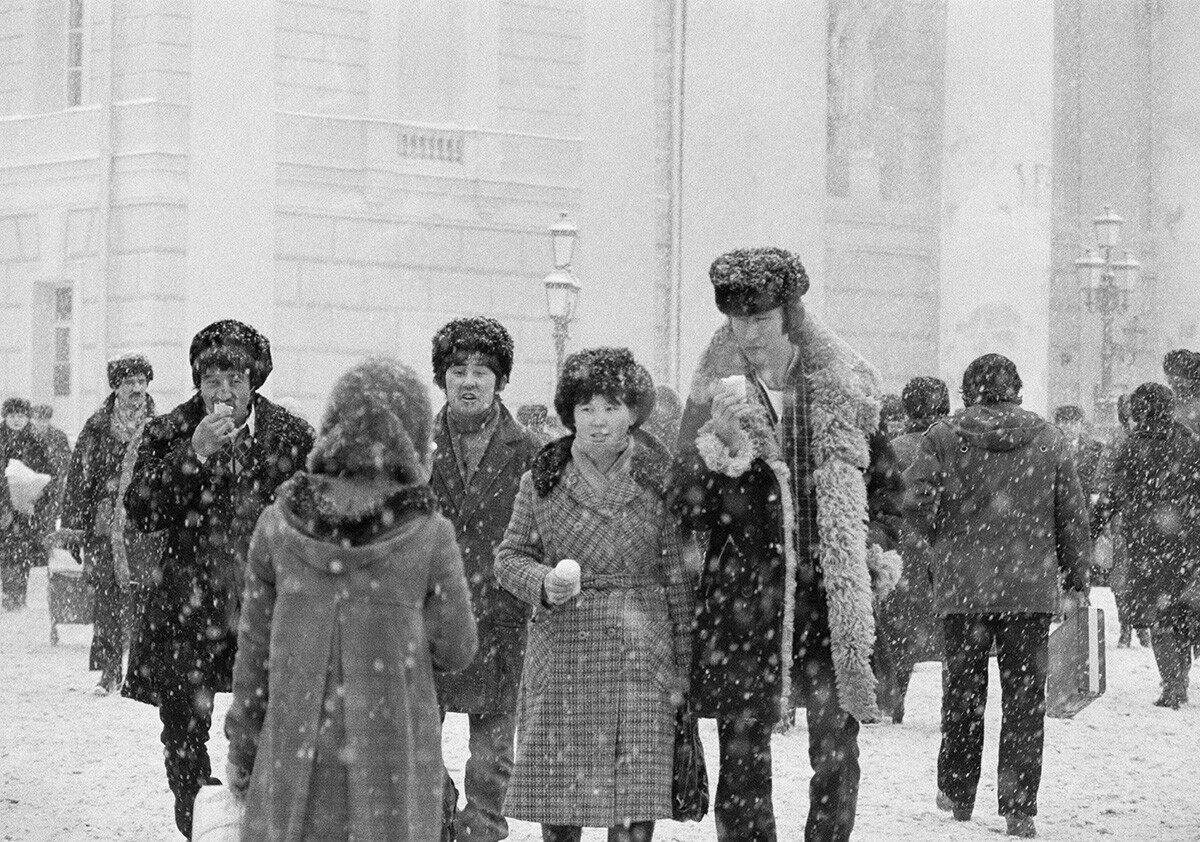
In the Fall of 1944, British Prime Minister Winston Churchill came to Moscow. It was cold, as the winter had arrived early. When his motorcade passed through the city center, through the car window Churchill saw a man standing in the street quietly eating an ice cream.
The prime minister asked the diplomat accompanying him whether the man was indeed eating an ice cream in the frost and the latter shrugged his shoulders, as if to say: What's the big deal? And then, Churchill allegedly said: "The people who eat ice cream in such cold weather are invincible."

This photo was taken at minus 35C.
Nikolai Lavrentyev / MAMM / MDFThere is no documentary evidence of him saying these words, but Russians' all-season love of ice cream invariably provokes questions from foreigners.
True, ice cream is very popular in Russia. Its factory production began in the mid-1930s, when head of People's Commissar for the Food Industry Anastas Mikoyan brought refrigeration equipment to the young Soviet state from the U.S. (you can read more about his trip here). Ice cream had existed in Russia before, but it was made by hand and only in the warm part of the year. ‘Plombir’ (from the French word ‘Plombières’), the recipe for which came from France at the beginning of the 19th century, was particularly popular.

Moscow in 1971.
Boris Kaufman/SputnikMikoyan himself was a great fan of ice cream. The first factory in Moscow's Fili neighborhood managed to produce 30 tons of ice cream a day in 1938. And, by 1972, the figure had reached 125 tons!
It was sold all year round and kiosks selling exclusively ice cream appeared in the streets of Soviet towns and cities. The sellers wore a standard uniform and worked throughout the year.
The most widely sold varieties of ice cream were the ‘Eskimo’ brand [chocolate coated vanilla ice cream on a stick], ice cream served in wafer cones and ‘Plombir’ briquettes (‘Plombir’ was traditionally made with vanilla, eggs, cream and sugar). The average price was 0.20 rubles (for comparison, the fare on the Moscow Metro was 0.05 rubles, while a kilogram of ‘Doktorskaya’ sausage cost 2.30 rubles). In addition, ice cream was made according to state standards from natural ingredients and was always available.
A total of 470,000 tons of ice cream is currently produced in Russia each year and every Russian, on average, eats 3.3 kg of it annually, which is equivalent to 40 ice cream cones! That might not seem like all that much in weight, but it is noteworthy that, in Russia, large portions are not commonly bought in one go, as is customary in the U.S. or Western European countries: Ice-cream in Russia is predominantly an impulse buy for pleasure.

'Walruses' in Novosibirsk.
Alexander Kryazhev/SputnikIce cream in Russia continues to be sold not just in ordinary grocery stores, but also from street kiosks, which, for Russians, is difficult to walk past without buying something. And a purchase of this sort is understandable when it's hot, but why ice cream in winter?
As a matter of fact, it's all quite simple. Ice cream in winter is like hot tea in summer or, for that matter, a trip to the ‘banya’ - it's how people attain a temperature balance with their environment. When you eat ice cream, you don't feel as cold. Some people do it intuitively, while others deliberately set out to increase their endurance. Eating ice cream can be somewhat compared to ice-hole swimming.
Furthermore, ice cream, like other sweet foods, influences the production of endorphins, thus lowering stress levels and making us happier.
Naturally, it's best to eat it in the warm environment of home, otherwise the unwary person runs a serious risk of catching a chill.
Dear readers,
Our website and social media accounts are under threat of being restricted or banned, due to the current circumstances. So, to keep up with our latest content, simply do the following:
If using any of Russia Beyond's content, partly or in full, always provide an active hyperlink to the original material.
Subscribe
to our newsletter!
Get the week's best stories straight to your inbox